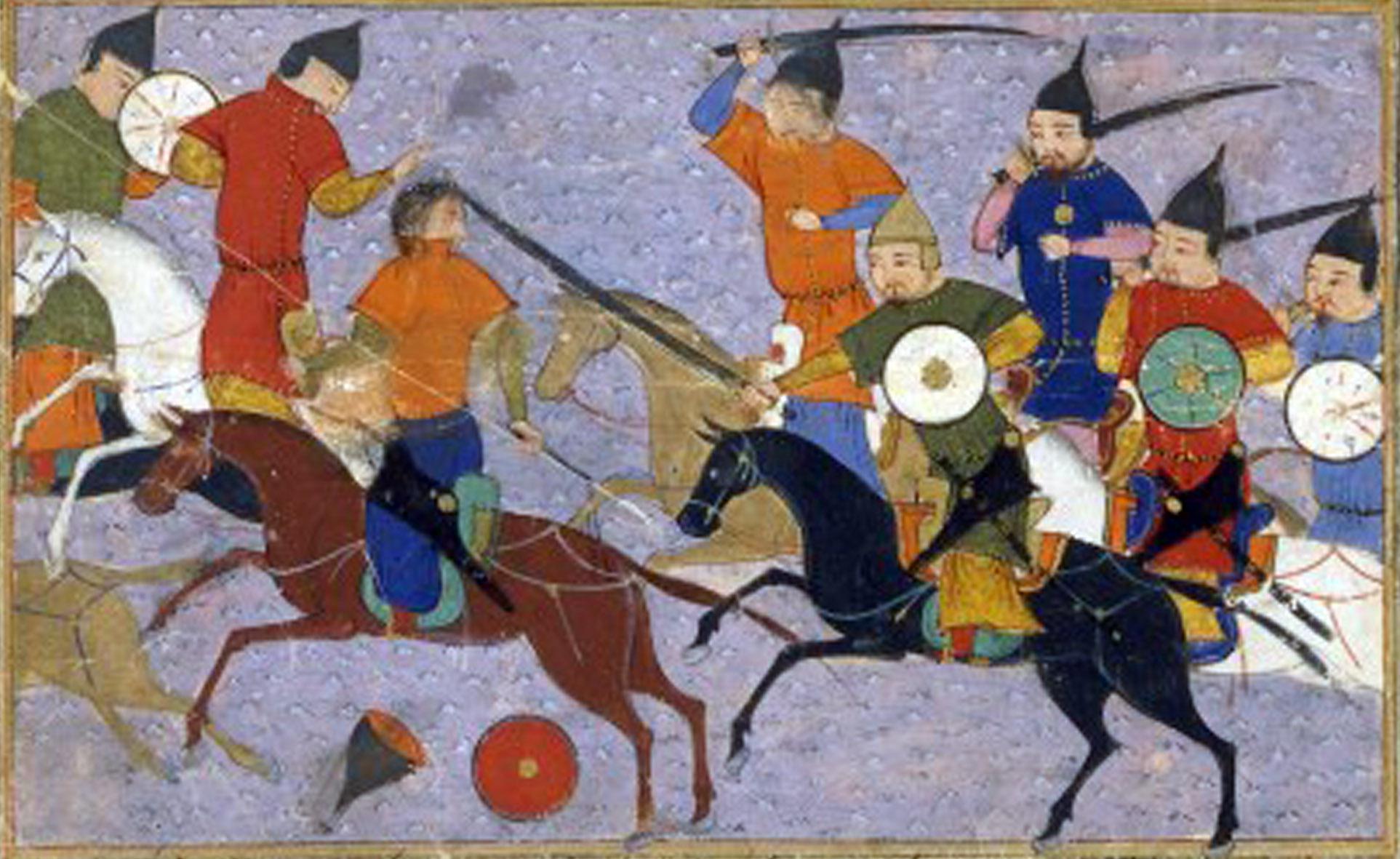This question originally appeared on Quora.
Answer by Andy Lee Chaisiri, art director and game designer:
There’s more than 1,000 years separating these two conquerors. The difference a millennium makes is:
Steel
Iron becomes steel when exposed to just the right amount of carbon, hardening it enough to keep an edge while maintaining enough flexibility to not be brittle. In Alexander the Great’s time, steel was either unheard of or incredibly rare. (It’s disputed.) In Genghis Khan’s time, it was mass-produced by the ton to arm and armor entire armies.
Alexander’s forces mostly wore pressed-linen armor. Parts of it were bronze and iron, but the majority was pressed linen, and it was good enough against the iron weapons of the time.
Genghis Khan’s forces wore layered silk, lacquered leather, and steel. They had steel swords, steel spears, and steel-tipped arrows.
Saddle and stirrups
Both of these incredibly important inventions for horseback riding are often taken for granted, but since the first man sat on a horse without falling off, it took many centuries (400 B.C.) for the next man to figure out that putting a chair on a horse was indeed a good idea, and then a few centuries more (300 A.D.) to figure out that sticking his feet through loops attached to the horse-chair is even better.
Riding a horse without a solid saddle means all of your weight is on the animals’ back. With a solid saddle, the weight of the rider is distributed over a larger area to the horse’s flanks. This makes for a more comfortable experience for the horse, increasing its endurance.
For the rider, a saddle provides a more comfortable seat, greater elevation, a groove, and raised backing for support.
Greater stability from saddle & stirrups means:
- You can wear heavier armor without fear of falling off your horse.
- You can ride a lot faster (look at how horse jockeys shift their weight forward when moving at full speed) without fear of falling off your horse.
- You can slam your spear at full speed into some poor guy, driving the weight of your steed into them, without fear of falling off your horse.
- You can shoot a bow with greater power and accuracy, even standing all the way up on the stirrup to get extra height and have the gait of the horse stabilized by your legs, and not fall off your horse.
- Stirrups allow the rider to stay on his steed without needing to cling his thighs constantly against the horse’s flank, greatly increasing the range of motion possible to swing a weapon or allowing him to shift his weight forward for the horse to run even faster. (Again, look at the way jockeys ride when their horses go at full speed. That’s a position only possible with stirrups.)
Gunpowder
Genghis Khan was intimately familiar with Chinese weapons, considering most of his life was spent fighting them. At this point in time, Chinese soldiers made use of flame throwers, shrapnel bombs, and breech-loading guns. At the height of Genghis Khan’s reign, he had vanquished the northern Chinese Jin dynasty and absorbed their heavy cavalry and gunpowder armed infantry into his forces.
With all that being said, let’s break down the encounter by what Alexander’s forces have and how Genghis Khan would fight them:
Macedonian Phalanx
Densely packed infantry with long spears dominated the warfare of Alexander’s era. That flamethrower I mentioned above—do you know what the Chinese called them? Phalanx chargers. The Chinese specifically noted, Hey, this weapon we invented that spews out fire and shrapnel is really good at making packed groups of dudes just fall over and die. Let’s give it a name that reflects this. Phalanxes are also vulnerable to flanking, as their strict formation means every man has to be tightly coordinated with his comrades. Even without gunpowder weapons, the Mongols could just circle them on horseback, firing arrows. So Alexander would need to send his …
Macedonian cavalry
Famous in their era as “heavy cavalry,” but 1,000 years later? The lack of solid saddles and stirrups means they cannot charge full force without the risk of being knocked off their horses. Horse armor (barding) was also very rare, if not unheard of in this era. In comparison …
Stirrup-equipped East Asian cavalry of this era ranged from light-horse archers to heavily armored riders on heavily armored horses. If Alexander’s cavalry chased after the light cavalry, they would be outmaneuvered while arrows are shot at them. If Alexander’s cavalry goes after the heavy cavalry, they will have to weather arrows at range to close in with their iron weapons against steel armor, or they get countercharged by men moving much faster, able to deliver greater impact on the charge (due to the saddle), and attack with greater mobility in melee (due to the stirrup). Then there’s leadership factors, such as Genghis Khan’s Mongols being more highly organized than Alexander’s Macedonians and able to coordinate complex maneuvers independently without Genghis Khan’s direct presence (while the Macedonians need Alexander to be there in person).
And on top of all of this, you’re having Alexander’s mostly infantry and some cavalry army face off against history’s most famous cavalry force on an open field.
Genghis Khan wins this very lopsided battle.
If you’d like to know how city-dwelling people are suppose to beat the near-mythically unstoppable horse nomad (or wondered how the Chinese lived next to the steppes for 2,000 years without being conquered all the time), check out: Andy Lee Chaisiri’s answer to What would be a feasible contemporary defensive technique/tactic/strategy to deploy against an invading Mongol army?
More questions on Hypothetical Battles:
